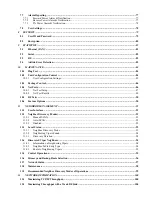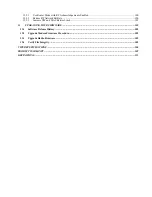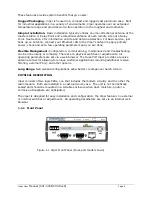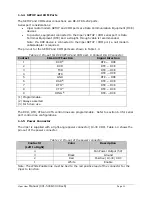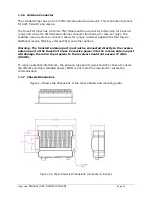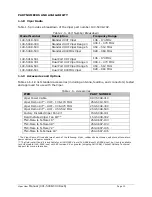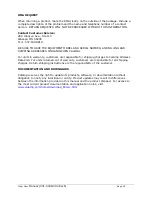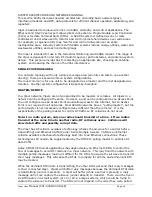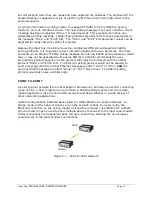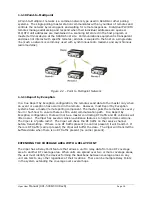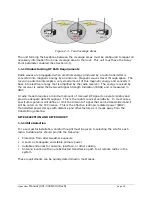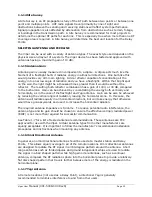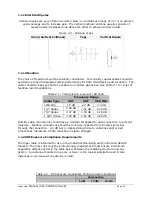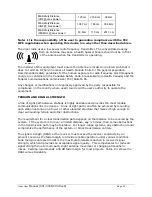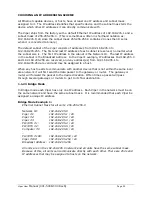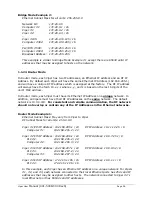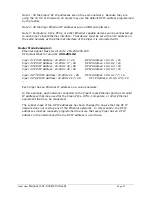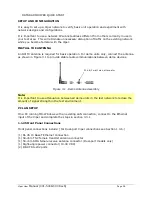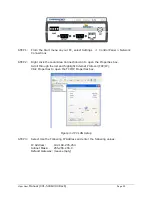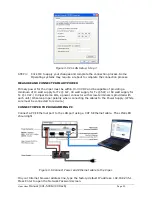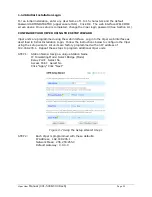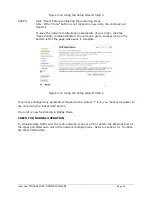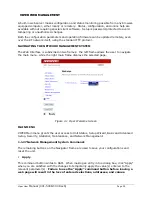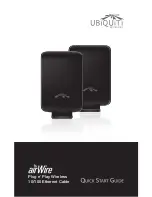
Viper User
Manual (001-5008-000 Rev6)
Page
20
1.1.14
Site Survey
A Site Survey is an RF propagation study of the RF path between two points or between one
point and multiple points. UHF radio signals travel primarily by line of sight and
obstructions between the sending and receiving stations will affect system performance.
Signal propagation is also affected by attenuation from obstructions such as terrain, foliage,
or buildings in the transmission path. A Site Survey is recommended for most projects to
determine the optimal RF paths for each link. This is especially true when more than one RF
coverage area is required. A Site Survey will determine the best unit location for the Relay
Points.
SELECTING ANTENNA AND FEEDLINE
The Viper can be used with a variety of antenna types. The exact style used depends on the
physical size and layout of a system. The Viper device has been tested and approved with
antennas having a maximum gain of 10 dBi.
1.1.15
Antenna Gain
Antenna gain is usually measured in comparison to a dipole. A dipole acts much like the
filament of a flashlight bulb: it radiates energy in almost all directions. One bulb like this
would provide very dim room lighting. Add a reflector capable of concentrating all the
energy into a narrow angle of radiation and you have a flashlight. Within that bright spot
on the wall, the light might be a thousand times greater than it would be without the
reflector. The resulting bulb-reflector combination has a gain of 1000, or 30 dB, compared
to the bulb alone. Gain can be achieved by concentrating the energy both vertically and
horizontally, as in the case of the flashlight and Yagi antenna. Gain can be also be achieved
by reducing the vertical angle of radiation, leaving the horizontal alone. In this case, the
antenna will radiate equally in all horizontal directions, but will take energy that otherwise
would have gone skywards and use it to increase the horizontal radiation.
The required antenna impedance is 50 ohms. To reduce potential radio interference, the
antenna type and its gain should be chosen to ensure the effective isotropic radiated power
(EIRP) is not more than required for successful communication.
See Table 1.7 for a list of tested antenna recommendations. These antennas are FCC
approved for use with the Viper. Similar antenna types from other manufacturers are
equally acceptable. It is important to follow the manufacturer’s recommended installation
procedures and instructions when mounting any antenna.
1.1.16
Omni Directional Antenna
In general, an omni directional antenna should be used at a master station and Relay
Points. This allows equal coverage to all of the remote locations. Omni directional antennas
are designed to radiate the RF signal in a 360-degree pattern around the antenna. Short
range antennas such as folded dipoles and ground independent whips are used to radiate
the signal in a ball shaped pattern while high gain omni antennas, such as a collinear
antenna, compress the RF radiation sphere into the horizontal plane to provide a relatively
flat disc shaped pattern that travels further because more of the energy is radiated in the
horizontal plane.
1.1.17
Yagi Antenna
At remote locations (not used as a Relay Point), a directional Yagi is generally
recommended to minimize interference to and from other users.

